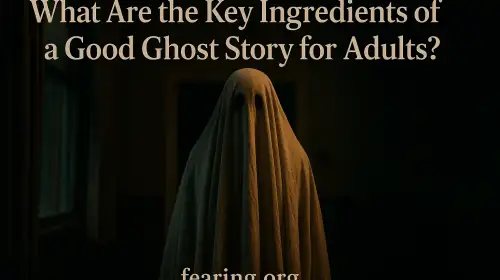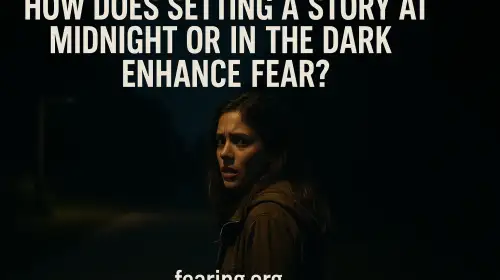Every culture has its stories — whispers traded in the dark, tales that make you check your rearview mirror a little longer than usual. They’re the bedtime stories that no one sleeps after. What makes these urban legends truly chilling isn’t just their imagination but the uncomfortable truth that many of them were born from real events.
In 2025, fascination with the real origins of horror is stronger than ever. Podcasts dissect them, documentaries dramatize them, and social media resurrects forgotten myths with eerie new life. But behind every “Slender Man,” “Bloody Mary,” or “Hook-Handed Man,” there are echoes of something that actually happened — something once real enough to make people believe.
The Hookman and the Lovers’ Lane Murders
One of America’s most told urban legends begins innocently — a young couple parked on a secluded road hears news of an escaped killer with a hook for a hand. They panic, drive away, and later find a metal hook hanging from their car door handle. It’s become a cautionary tale for teenagers for decades, but few realize it was partly inspired by real unsolved murders.
In the 1940s and 1950s, several mysterious killings occurred near lovers’ lanes across the United States, particularly in Texas. The most famous, known as The Texarkana Moonlight Murders, involved a masked assailant who attacked couples in parked cars. The killer was never caught, but local fear turned him into legend — a faceless figure whose crimes blurred into folklore. Over time, the hook became a symbol: a warning that danger might be closer than romance admits.
Bloody Mary and the Mirror of Death
Say her name three times in the mirror, and she appears. Every child dares another to do it, yet no one laughs for long afterward. The “Bloody Mary” ritual feels like pure invention, but its roots trace back to centuries of ritual and real tragedy.
Historically, “Mary” is thought to refer to Mary I of England, known as “Bloody Mary” for executing hundreds during her reign. Others link the legend to Mary Worth, a supposed witch executed in colonial America. But the eeriest connection lies in a 19th-century parlor game: young women were told to walk backward up a staircase holding a candle and mirror to glimpse their future husband’s face — or a skull, if they were destined to die young.
Over time, folklore merged fact and fear, turning a superstition about vanity and fate into one of the most universal sleepover horrors. What once was a Victorian ritual of curiosity became a terrifying mirror between worlds.
The Babysitter and the Man Upstairs
It begins with a phone call. “Have you checked the children?” The babysitter calls the police, only to discover the call is coming from inside the house. This tale has haunted generations — and it came from a real nightmare.
In 1950, a disturbing crime in Columbia, Missouri, shocked America: a young babysitter named Janett Christman was murdered while looking after a three-year-old child. Police later found evidence that the killer had called the home before the attack. Though the suspect was never convicted, the story spread rapidly. The idea that evil could already be inside — not outside — turned safety into illusion.
This urban legend endures because it preys on everyday trust. It transforms ordinary domesticity into dread, reminding us that fear doesn’t always knock; sometimes, it’s already in the hallway.
The Vanishing Hitchhiker
It’s one of the oldest urban legends and yet never grows old: a driver picks up a quiet young woman on a rainy night. She gives an address, vanishes before they arrive, and when the driver knocks on the door, an elderly woman says, “My daughter died on that road years ago.”
This legend’s real-world roots stretch back to the 19th century, where newspapers across Europe and America documented eerily similar accounts. Many historians believe the story evolved from post-war trauma — soldiers and civilians alike encountering grief they couldn’t explain. These tales of phantom passengers became a cultural expression of loss, the hope that those gone too soon might still need a final ride home.
Even today, local versions persist — a spectral bride in Chicago, a teenage ghost in Japan, a hitchhiker on a desolate South African road. Each retelling ties fear to empathy, proving that the most haunting ghosts are the ones we create to keep memory alive.
Slender Man and the Digital Nightmare
Unlike ancient folklore, some legends are born online. The Slender Man, a tall, faceless figure in a black suit who preys on children, began as an internet contest image in 2009. Within weeks, he became a shared myth across message boards, inspiring videos, art, and — tragically — violence.
In 2014, two 12-year-old girls in Wisconsin lured their friend into the woods and stabbed her, claiming they did it to appease Slender Man. The victim survived, but the attack sent shockwaves through the world. For the first time, a digital legend had manifested in physical reality.
This event revealed how myths adapt to technology. The internet didn’t just spread the story — it made belief contagious. Slender Man became proof that fear evolves as fast as our devices do. He isn’t hiding in forests anymore; he’s lurking in Wi-Fi signals and message threads.
The Real Faces Behind the Myths
What makes these stories survive centuries isn’t just fear — it’s recognition. The Hookman warns about vulnerability. Bloody Mary reflects our obsession with beauty and death. The Babysitter story speaks to trust broken within the safest walls. The Vanishing Hitchhiker mourns what we’ve lost. And Slender Man reveals how our collective imagination, when amplified, can spill into real harm.
Each legend starts with something real — a crime, a ritual, an emotion — then mutates until it mirrors our deepest anxieties. The fear becomes a language, one generation passing its lessons to the next through whispers and warnings.
Why We Keep Believing
Urban legends endure because they satisfy a primal need. They give shape to the unexplainable, moral to the senseless, and identity to the unseen. When a community experiences fear — a disappearance, a tragedy, a mystery — a legend forms as a defense mechanism. By telling the story, people contain their fear.
What’s fascinating is how these tales adapt to the times. Once, they warned travelers about haunted crossroads; now, they warn parents about the internet. The settings change, but the emotion stays the same: fear as a guide, not an enemy. It’s proof that humans don’t just survive horror — we narrate it, reshape it, and pass it down so others can understand their own darkness.
The Thread Between Fact and Folklore
Every scary story begins with someone saying, “This really happened.” Sometimes it did. Sometimes it only felt that way. But the emotional truth behind these legends is undeniable — fear always comes from somewhere real.
From the dusty roads of 1940s Texas to the flickering glow of a laptop screen, humanity keeps finding ways to retell its nightmares. And maybe that’s the true power of urban legends: they remind us that reality is often scarier than fiction, and that every story we fear began, at least once, as someone’s truth.

